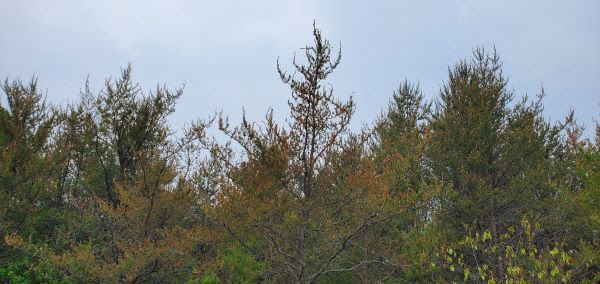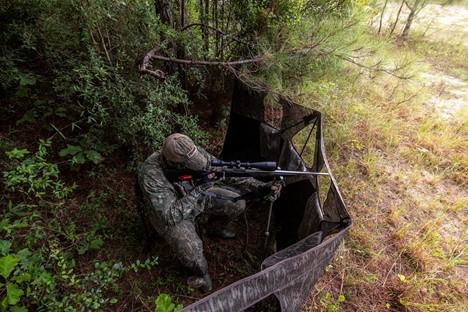Michigan: brown needles on jack pine likely due to budworm outbreak
 |
Notice brown branches on jack pine? If you’re in the northern Lower Peninsula or some parts of the Upper Peninsula, jack pine budworm may be to blame.
Budworm caterpillars feed off needles on jack pine and red pine trees, leaving trees defoliated and causing die-back among the crowns of trees. Clipped and damaged needles turn reddish brown in early July, making the damage very apparent. Over time, rain and wind remove the dead needles, leaving trees with a bare, grayish appearance.
The budworm is a native insect with a population that usually booms, then collapses after two to four years. Outbreaks occur every six to 12 years.
“What we’re seeing right now is an outbreak that started in 2022 with infestations in the central and eastern Lower Peninsula and some small pockets in the U.P.,” said Simeon Wright, forest health specialist with the Michigan Department of Natural Resources. “The last large outbreak was in 2015.”
About 28,000 acres were defoliated during 2022, compared to 118,000 acres during the last large outbreak in 2015.
Severe infestations can kill trees or lead to dieback in the tops of older, overmature jack pine stands, creating fuel for intense wildfires.
Jack pine is a short-lived species, often reaching maturity at 40-55 years. Trees older than 45 that grow on sandy sites and suffer from stressors such as drought are most vulnerable to infestation, Wright said. Current management practices – harvesting jack pine before they are at risk – greatly reduce jack pine budworm impacts and the subsequent risk of damaging wildfires while providing suitable conditions for a new stand of jack pine to grow.
Jack pine budworm’s scientific name is Choristoneura pinus. Adult moths, reddish-brown with white markings, lay masses of green eggs on jack pine needles.
Young caterpillars hatch, then spin cocoons to overwinter, emerging again in spring. They are yellowish-brown, turning reddish-brown with cream-colored spots. They have a black head and reach about 1 inch in length.
After feeding on needles for about six weeks, they pupate and emerge as adult moths in six to 10 days.
Contact: James Wieferich, 517-242-6300 (Lower Peninsula), or Simeon Wright, 906-203-9466 (Upper Peninsula)
You may also like
-
DNR Looking To Buy Bushels Of Red And White Pine Cones
-
Seedlings Still Available For Spring 2024 Planting
-
Van der Brohe Arboretum and Bird Sanctuary is conducting the 2023 Annual Tree Sale.
-
Chestnut Hill Outdoors Top Picks for Southern Habitats
-
Chestnut Hill Outdoors Summer Fruit – Keep Deer Happy Through the Summer
